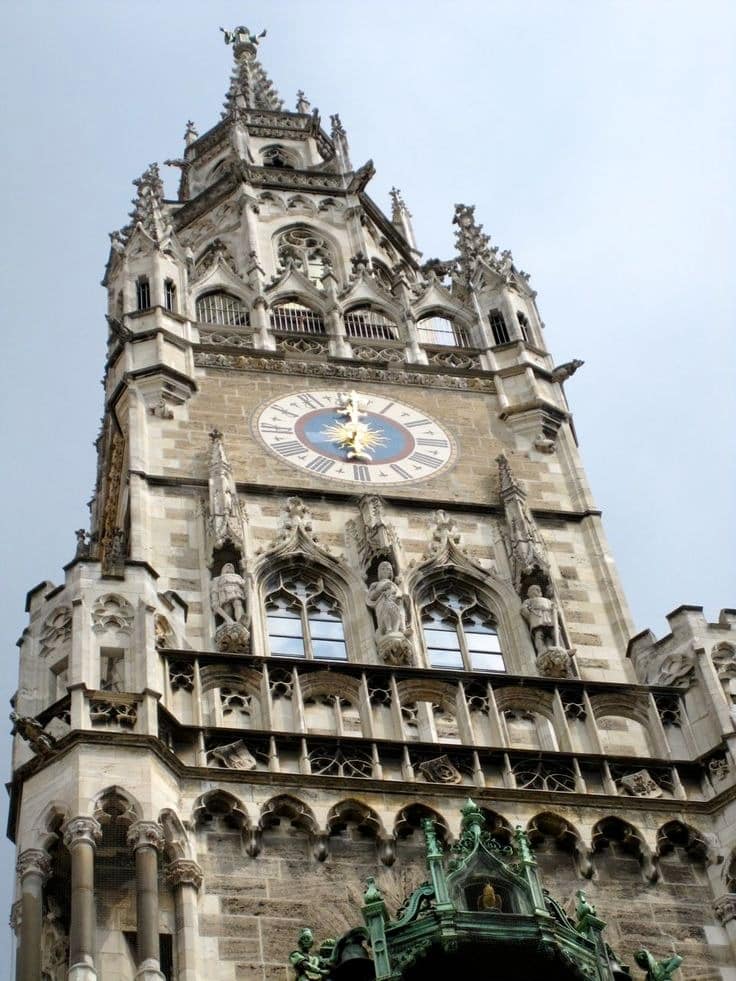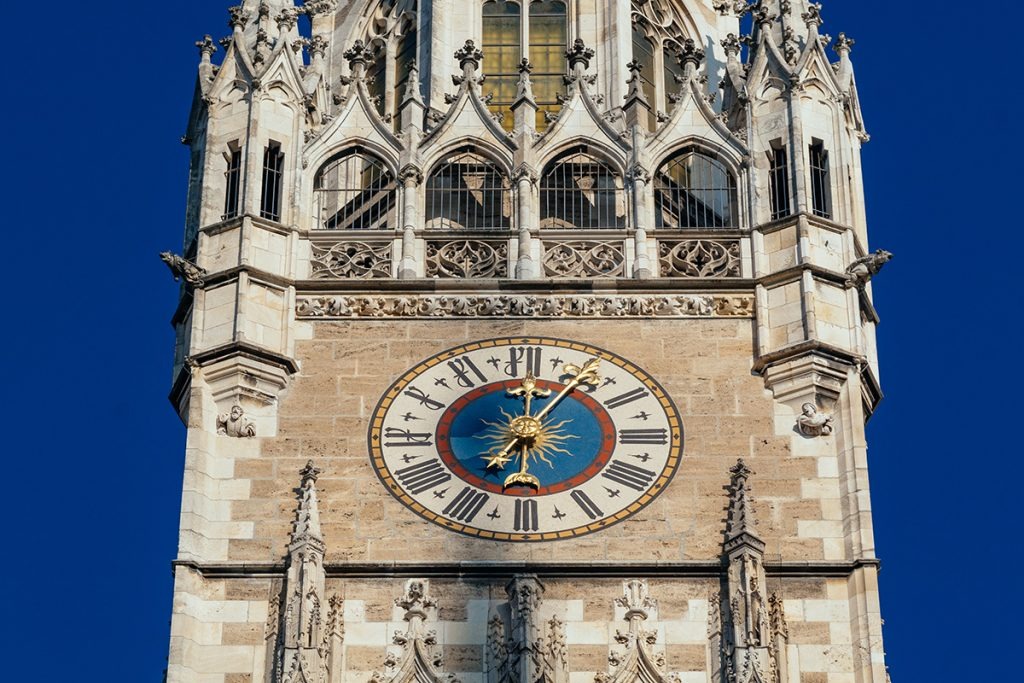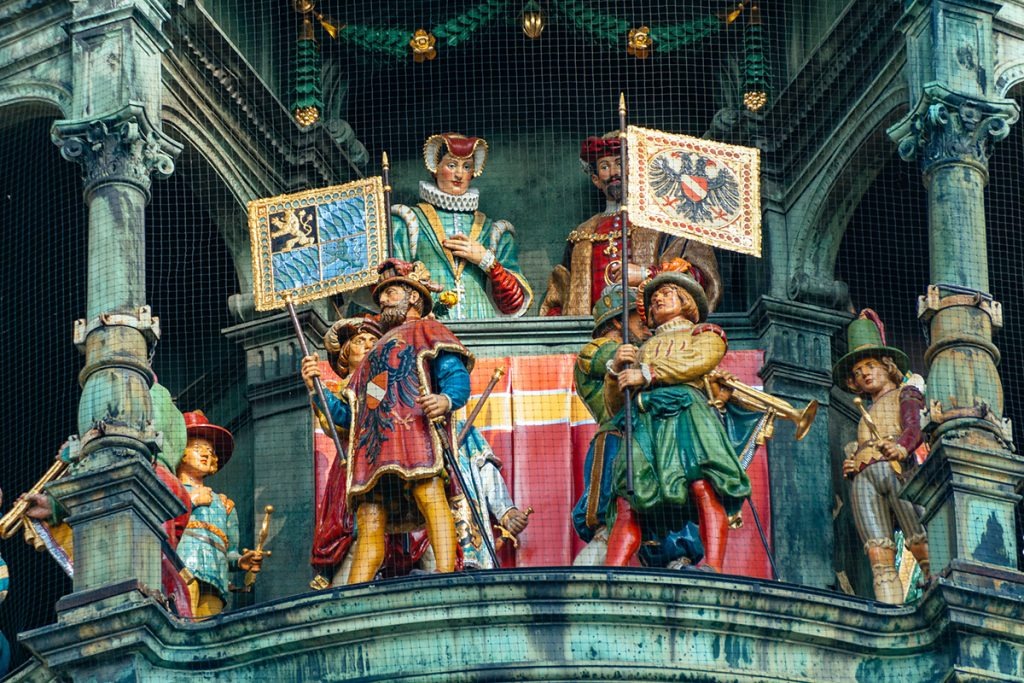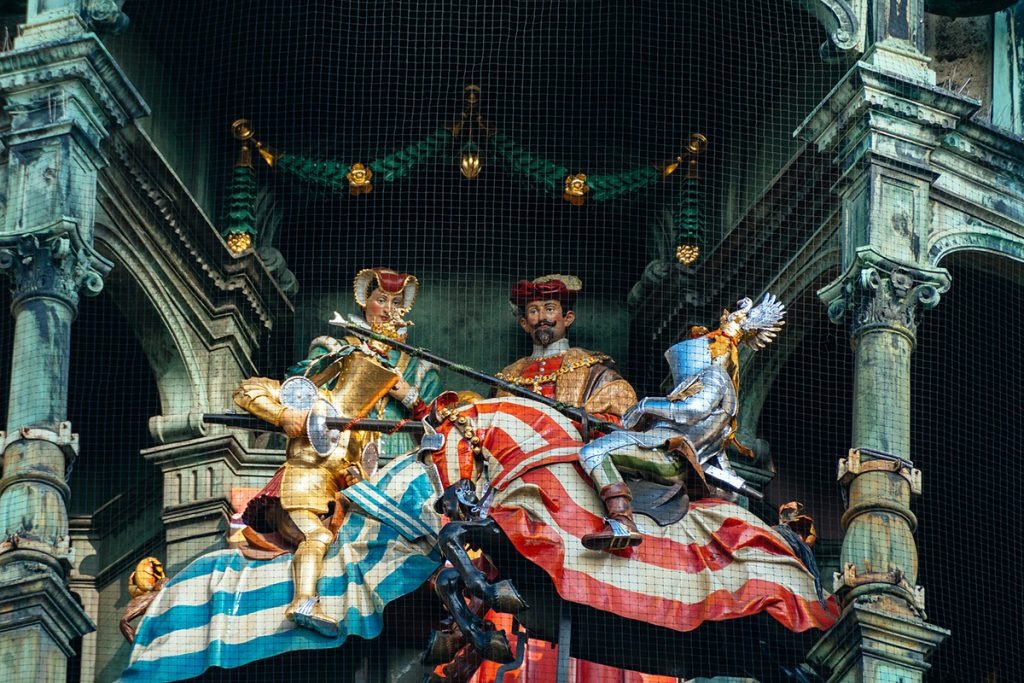Glockenspiel Clock Tower – A Captivating Historic Mechanical Clock In Marienplatz
The Rathaus-Glockenspiel, a captivating mechanical clock, stands proudly in Marienplatz Square, Munich, Germany.
This clock is famous for its life-size characters.

History
The Glockenspiel, added to the Neues Rathaus (New Town Hall) in 1908, features 43 bells and 32 life-sized figures.
Every day at 11 a.m. and 12 p.m., and at 5 p.m. from March to October, it brings to life two significant stories from Munich’s past, taking about 15 minutes for the entire show.
In 2007, the Glockenspiel underwent a restoration supported by the German Foundation for Monument Protection.
The clock is partially powered by solar panels and requires a player to operate it 364 days a year.

How Old is the Glockenspiel in Munich?
The Munich Glockenspiel is 110 years old.
The idea for it came up in 1904, during the final stages of building the New Town Hall.
However, it wasn’t completed until 1908. There were some sound issues in the first few months, but it finally started working properly on February 18, 1909.

Architecture
The Marriage of Duke Wilhelm V
The top half of the Glockenspiel recounts the marriage of Duke Wilhelm V to Renata of Lorraine in 1568.
The spectacle includes a joust with knights on horseback representing Bavaria and Lothringen (Lorraine).
The Bavarian knight, dressed in white and blue, wins every time, symbolizing Bavaria’s triumph.

The Schäfflerstanz (Coopers’ Dance)
The bottom half of the Glockenspiel tells the story of the Schäfflerstanz.
This dance commemorates the end of a severe plague in 1517.
Legend says the coopers (barrel-makers) danced through the streets, encouraging people to leave their homes after the plague.

This dance represents perseverance and loyalty, performed every seven years in Munich, with the last performance in 2019.

The Golden Rooster
At the end of the show, a small golden rooster at the top of the Glockenspiel chirps three times, marking the end of the performance.

